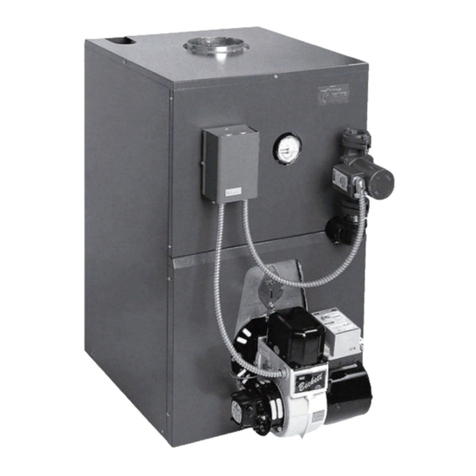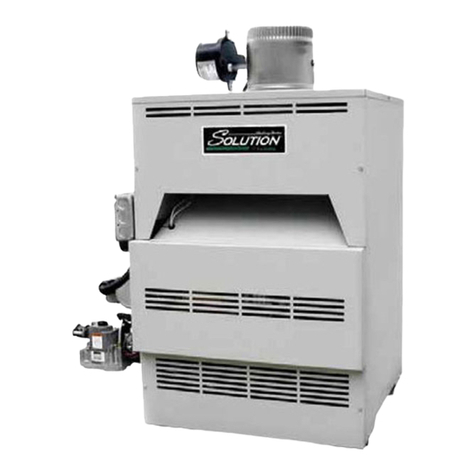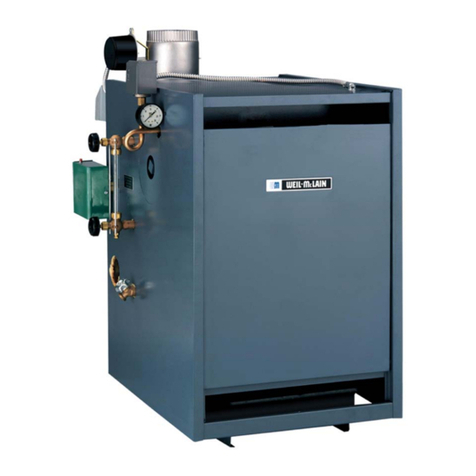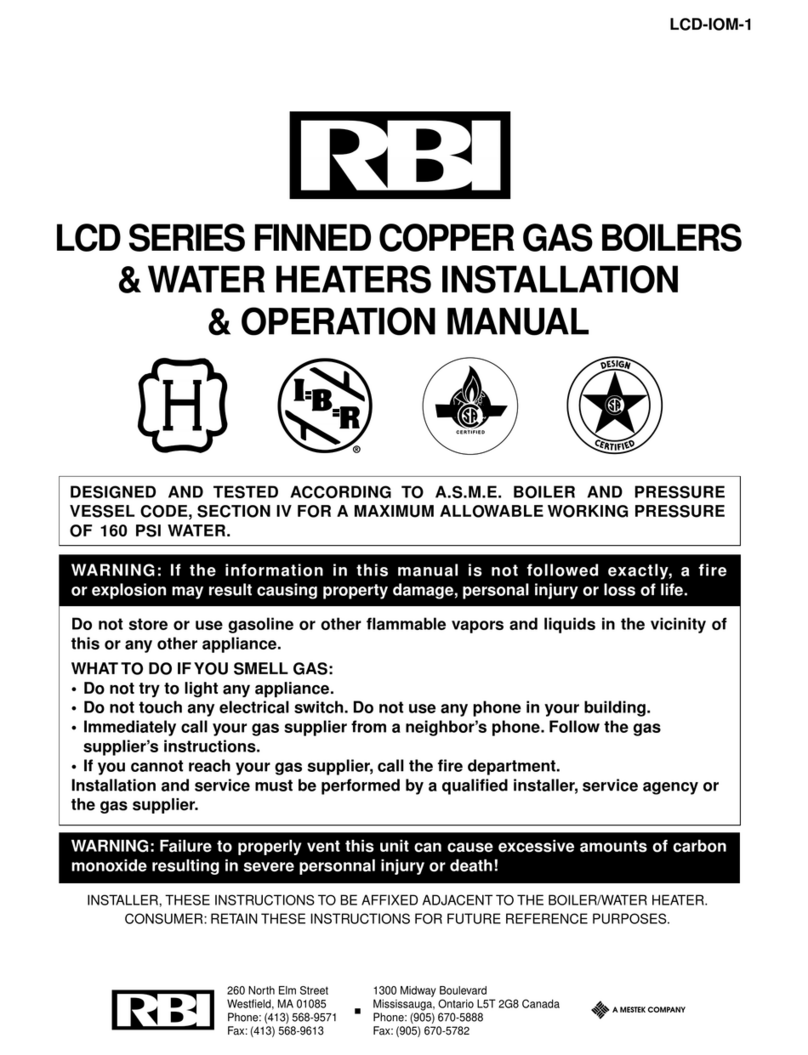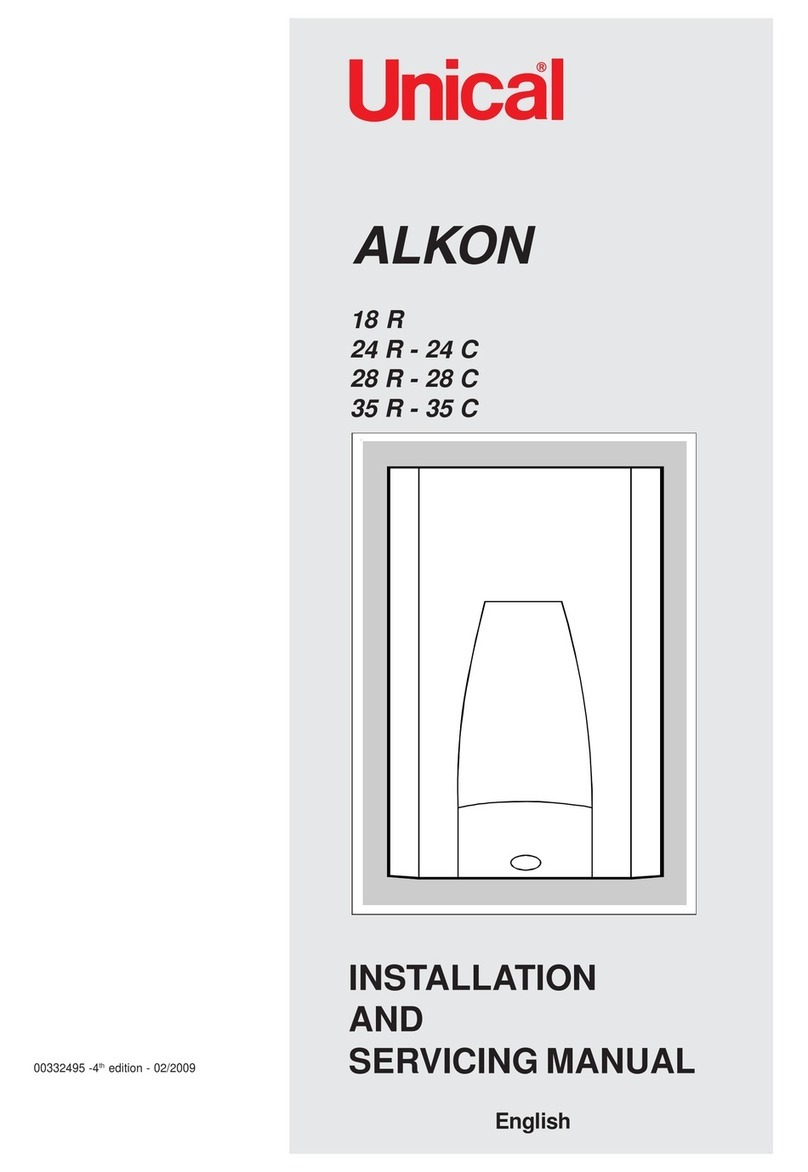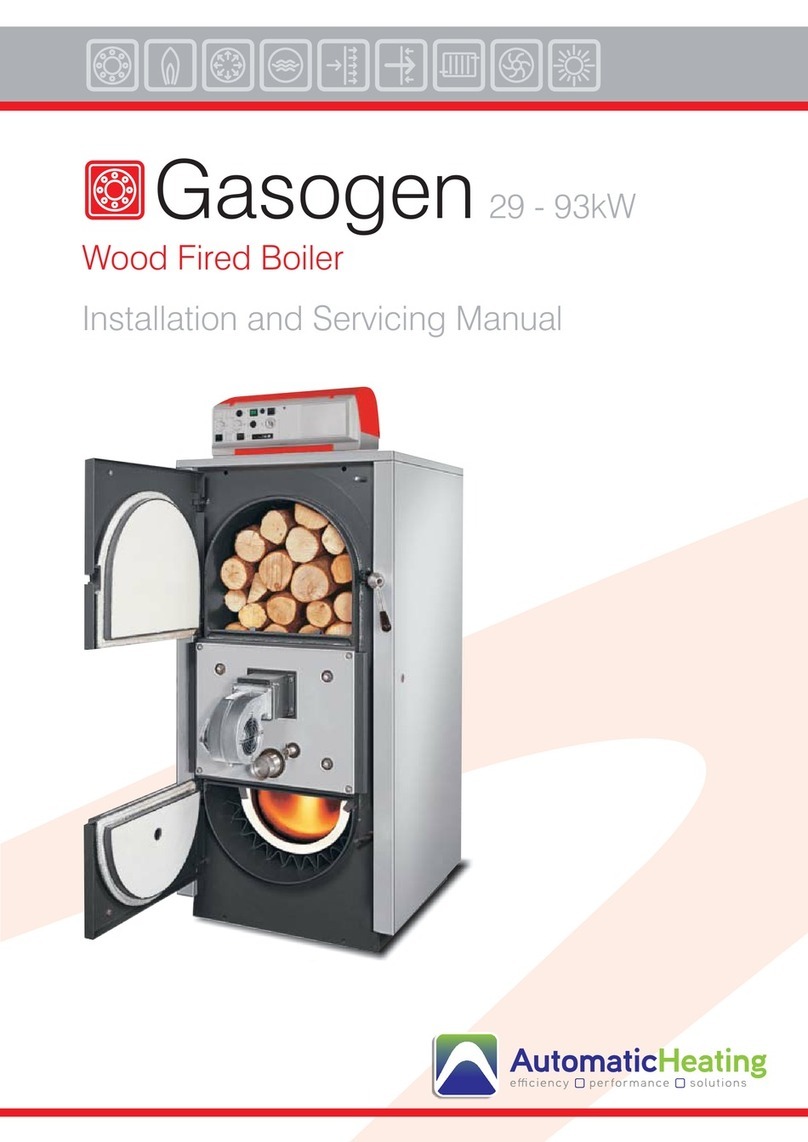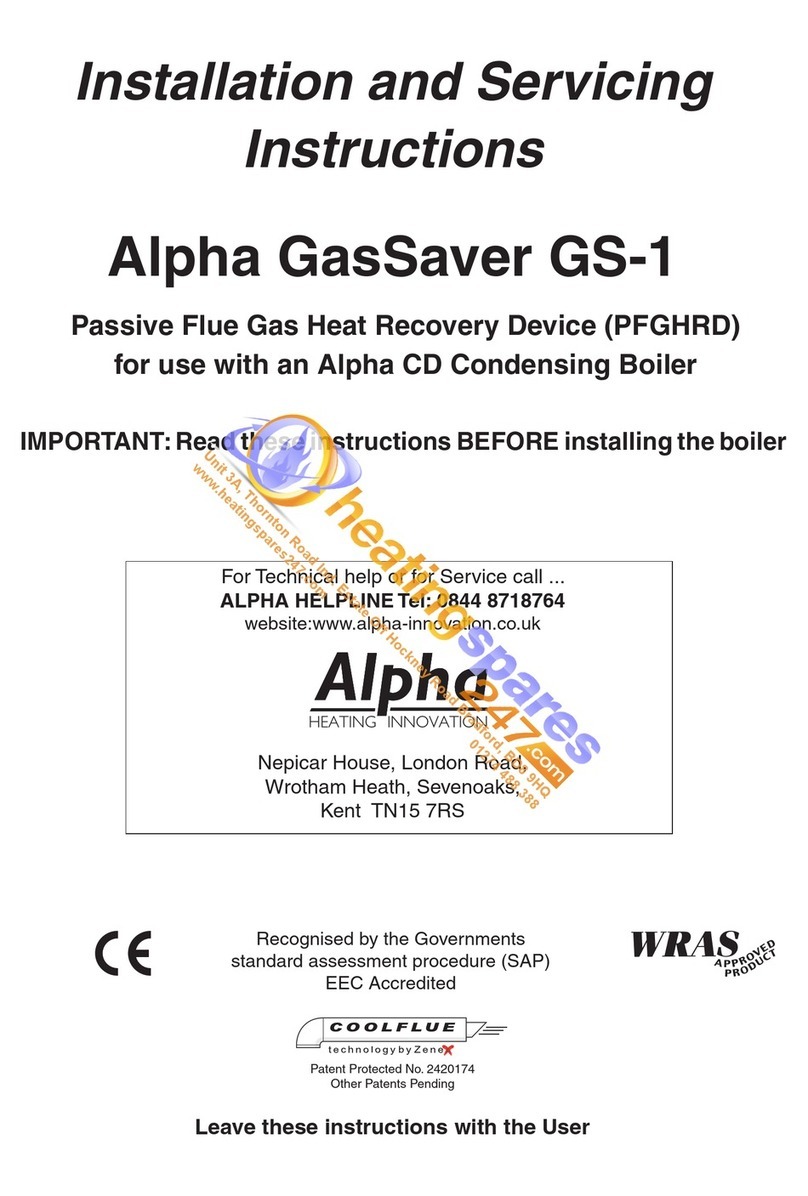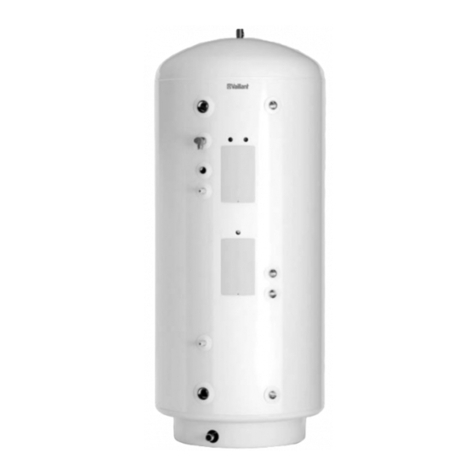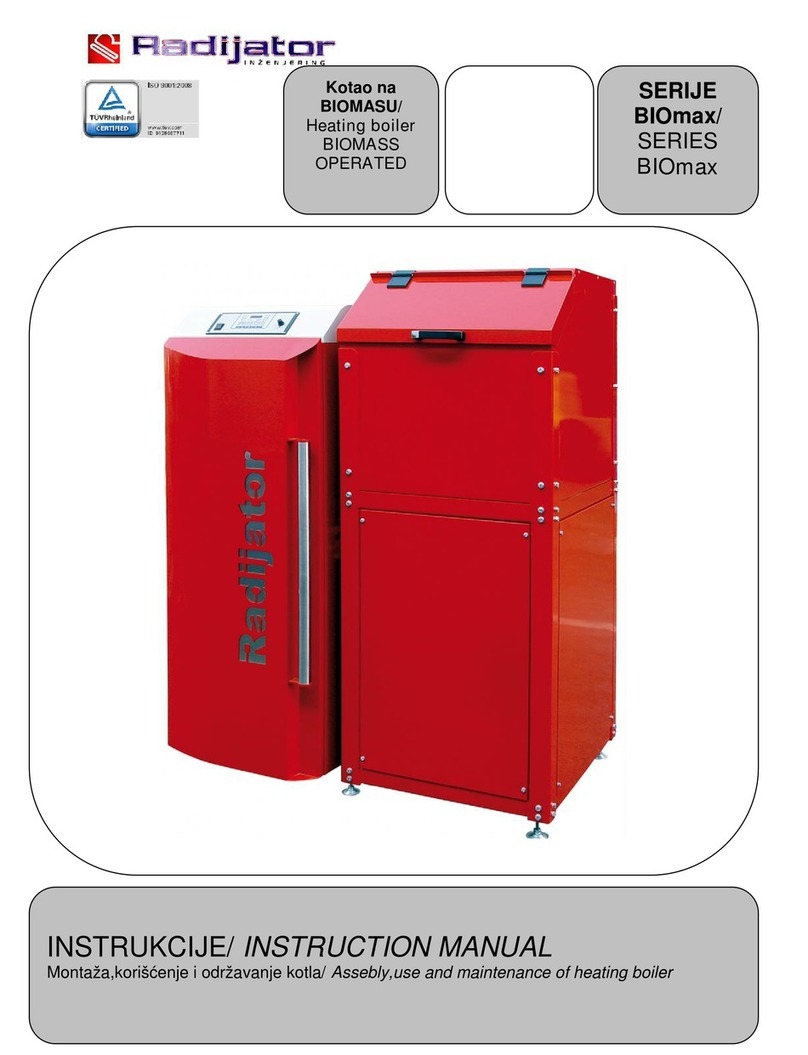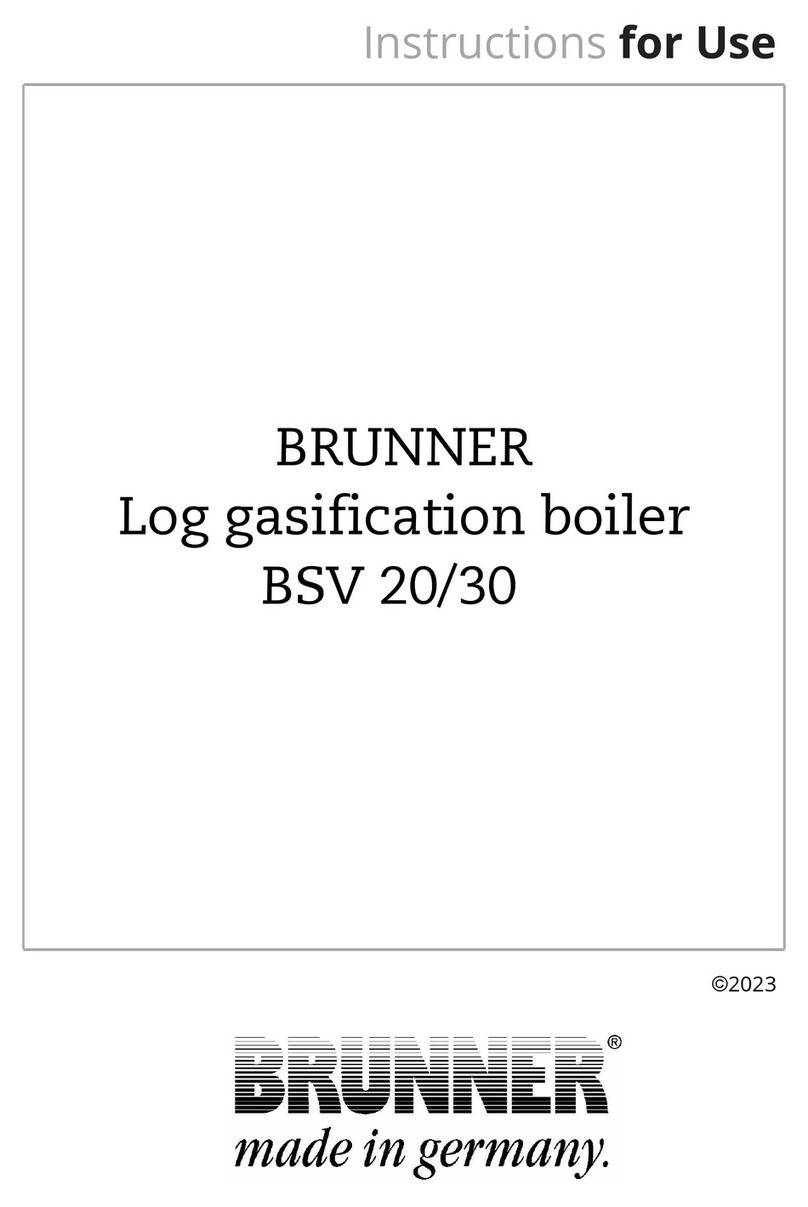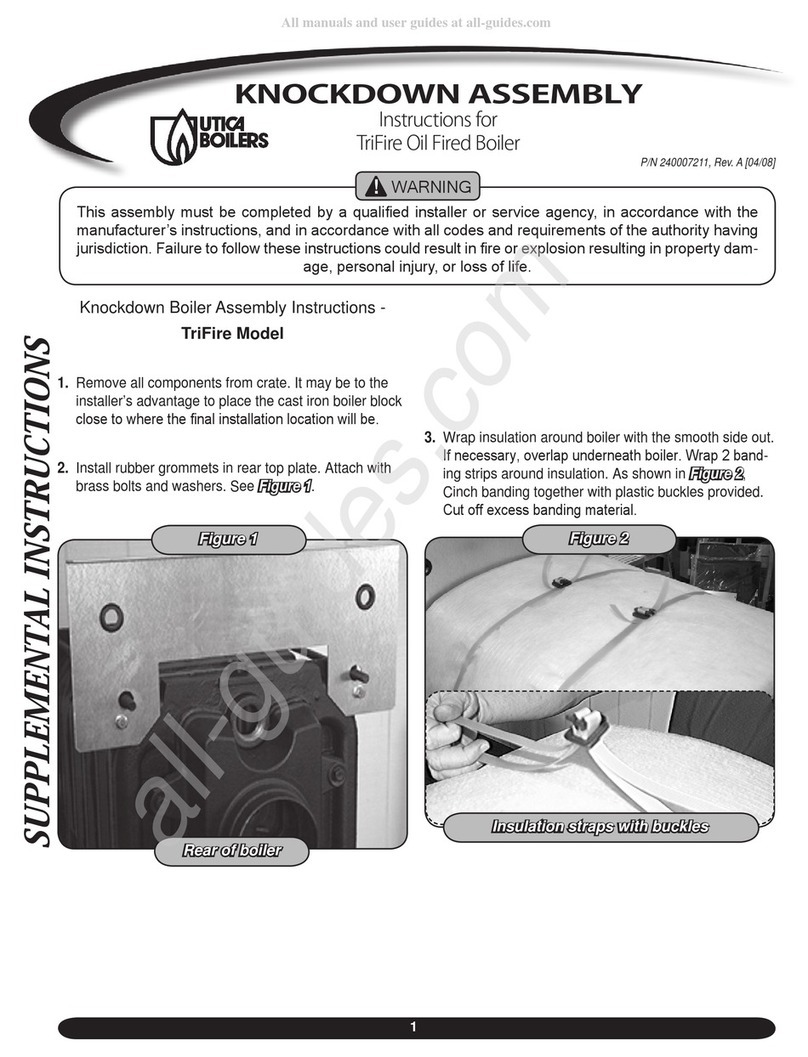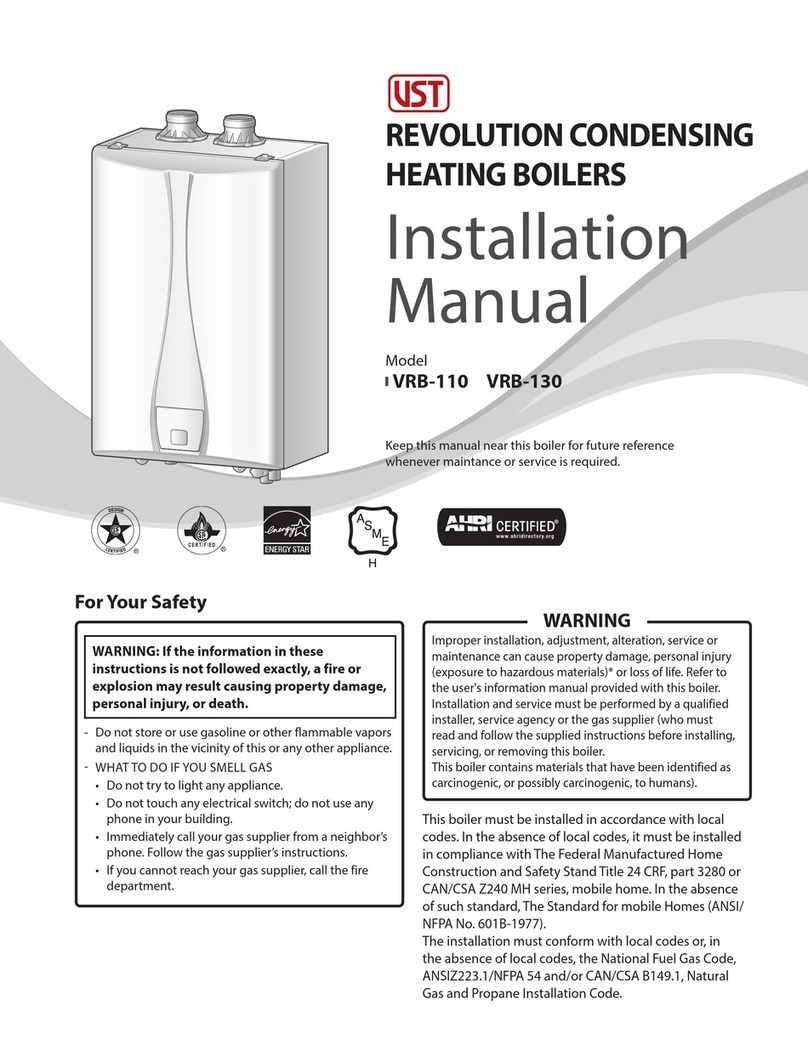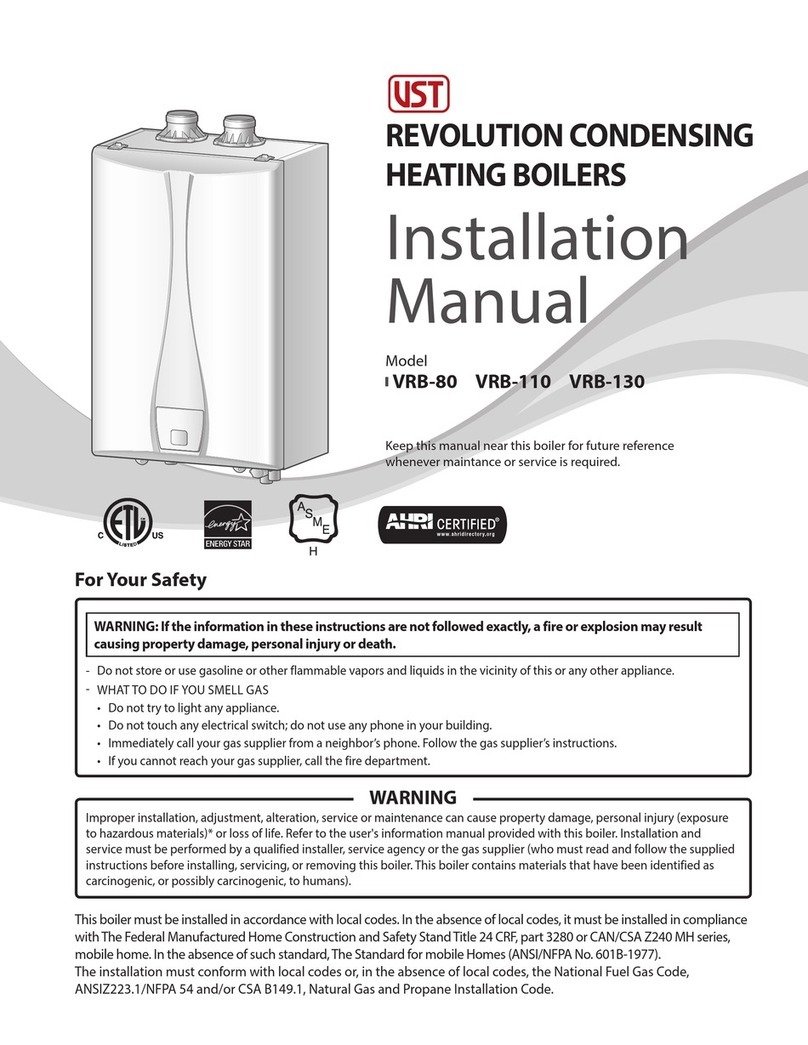
5
Important Note for the State of Massachusetts
Table of Contents
Safety Information .................................... 2
Important Note for the State of
Massachusetts ........................................... 4
General Information.................................. 6
Included Items ................................................................... 6
Optional Accessories........................................................ 6
Specifications...................................................................... 7
Rating Plate ......................................................................... 8
Dimensions.......................................................................... 9
Components .....................................................................10
Installing the Boiler ................................. 12
Installer Qualifications...................................................12
Compliance Requirements ..........................................12
Location..............................................................................12
Installing the System Piping................... 15
Installing a Space Heating System............................15
Installing a Domestic Hot Water(DHW) System ...17
Connection the Condensate Drain...........................20
System Filling....................................................................21
Test the Water System ...................................................22
Example of System Applications ...............................22
Connecting the Gas Supply .................... 25
Gas Pipe Sizing Tables....................................................25
Gas Piping..........................................................................26
Inlet Gas Pressure............................................................27
Installing a Vent ....................................... 29
Vent Type............................................................................29
Vent Pipe Materials.........................................................33
Vent Length.......................................................................33
Connecting the Vent Clip .............................................34
Vent Termination.............................................................34
Setting the DIP Switches......................... 37
Connecting the Power Supply ................ 38
Installation Checklist............................... 39
Operating the Boiler................................ 42
Turning the Boiler On or Off........................................42
Setting the Space Heating Temperature ................42
Setting the DHW(Domestic Hot Water)
Temperature......................................................................43
Viewing Basic Information...........................................43
Setting the Heat Load for The Outdoor Reset
Control Mode....................................................................47
Appendix.................................................. 49
Gas Conversion ................................................................49
Wiring Diagram........................................ 53
Component Assembly Diagrams and
Parts Lists ................................................. 54
Case Parts (VRC)...............................................................54
Flue Parts (VRC)................................................................56
Water Parts (VRC Model)...............................................59
Outdoor Temperature Sensor
Installation .............................................. 61
Outdoor Temperature Sensor (Optional)................61
Outdoor Reset Control (Available with Optional
Outdoor Temperature Sensor)....................................61

